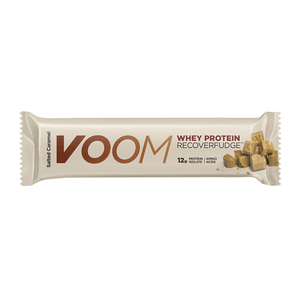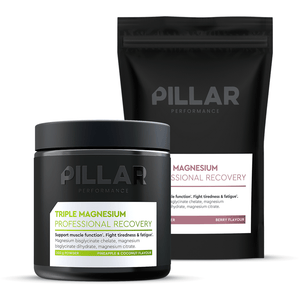It’s your choice - with our knowledge.
Product Insights
Discover more about the products in this article

Protein Bar Recover Fudge
Featured Products
Essential Recovery Techniques for Runners: Alleviating Muscle Pain and Preventing Injury
Recovery is a critical component of any training program for runners. Proper recovery not only helps alleviate muscle pain but also prevents injuries, ensuring runners can train consistently and perform at their best. This article explores simple and effective recovery techniques that every runner can incorporate into their routine.
Understanding the Importance of Recovery
The Role of Recovery
Recovery in running is about giving your body the time and care it needs to repair and strengthen itself between workouts. This process is crucial to:
- Reduce the risk of injuries
- Decrease muscle soreness
- Restore energy levels
- Improve overall performance
Signs of Inadequate Recovery
Ignoring recovery can lead to several signs of overtraining, including:
- Persistent muscle soreness
- Increased susceptibility to injuries
- Feeling tired or drained
- Plateaued or declining performance
Post-Run Recovery Techniques
Cooling Down
Finishing your run with a cool-down phase—consisting of slow jogging or walking followed by stretching—helps gradually lower your heart rate and stretch muscles, aiding in recovery and flexibility.
Hydration and Nutrition
It’s vital to rehydrate and refuel after a run. If you know there will be some time between the end of a race or session and when you eat a meal, a recovery bar such as VOOM Protein Bar Recover Fudge is a good solution. Drinking an electrolyte drink also helps restore hydration levels, while consuming a balanced meal with proteins and carbohydrates aids in muscle repair and energy recovery.
Compression and Elevation
Wearing compression garments like a BEARHUG Knee Compression Support can boost circulation and reduce soreness. Elevating your legs after a run can also help decrease swelling by draining excess fluids.
Tools and Techniques for Muscle Care
Massage
Self-massage or using tools such as foam rollers can release muscle tightness and trigger points. This promotes blood flow and speeds up muscle repair.
Stretching and Flexibility Exercises
Incorporating regular stretching and flexibility exercises can enhance your range of motion and reduce the risk of injuries. Focus on areas heavily used in running, such as the calves, hamstrings, hip flexors, and quadriceps.
Rest and Sleep
Adequate rest and quality sleep are fundamental for recovery. Aim for 7-9 hours of sleep per night to facilitate the body’s natural repair processes. Sleep supplements such as PILLAR Triple Magnesium help promote sleep and recovery.
Advanced Recovery Techniques
Cold Therapy
Cold therapy can reduce inflammation and muscle soreness when used appropriately, such as applying ice packs or taking cold baths after allowing the body to cool down gradually post-run.
Heat Therapy
Heat helps relax and loosen stiff muscles, which is useful before stretching or massage. Applying heat packs or soaking in a warm bath can increase blood flow and relieve muscle pain.
Active Recovery
Engaging in low-intensity activities like walking, gentle cycling, or swimming can help maintain circulation and lessen muscle stiffness without overexerting the muscles.
Summary
Implementing these recovery strategies can significantly decrease injury risk and enhance running performance. Effective recovery is as critical as the training itself, so it should be a priority in your training plan to ensure longevity in the sport and better athletic performance.
It’s your choice - with our knowledge.










































































































